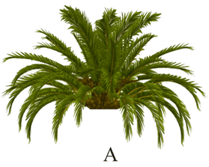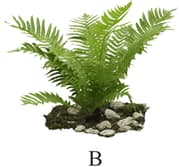Gymnosperms
Gymnosperms: Overview
This topic describes gymnosperms. It explains the meaning of gymnosperms and also explains why they are known as heterosporous. The topic also explains about its reproduction.
Important Questions on Gymnosperms
Which class of Gymnosperms include the plant called Living fossil.
Which among the following does not include the gymnosperms?


Identify the image A and B and recall their division from the given options.
Which among the following is true about conifers?
Gymnosperms are better adapted as land plants than the bryophytes.
What is the reason of gymnosperms being able to survive in different land habitats?
Which of the following will you keep in the group of gymnosperms?
How many embryo sacs are present in a single megasporangium?
What is the protective layer surrounding the megasporangium called?
Megasporangium is the ovule with integument of a plant.
The sporophytic plant body of Pinus produce microsporophylls and megasporophylls in two types of cones.
The pollen grains germinate on the stigma and the resulting pollen tubes grow through the tissues of stigma and style and reach the _____(anther/ovule/pollen sac).
The female cone in a Pinus tree is a modified _______.
In which of the following will the Pinus seed originate?
Fill in the blank with the correct answer given in the bracket.
Spore bearing leaf is called _____ (sporophyll/sporangia/sporangiophore).
How much time is generally required by the Pinus plant from pollination to fertilization?
Microsporangia and megasporangia are found in the same strobilus in
